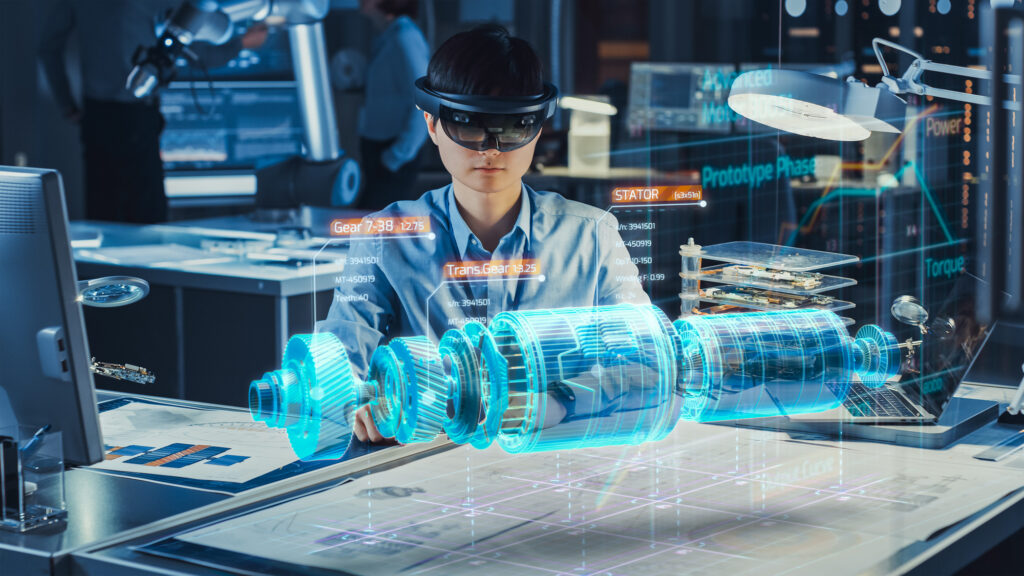Virtual reality (VR) is a computer-generated simulation of a three-dimensional environment, which can be explored and interacted with by a person. VR systems connected to the internet are known as virtual worlds. They can be viewed using specialized equipment such as head-mounted displays, data gloves, and haptic suits.
VR has been in use for over 20 years, but only recently has it become cost-effective for consumers to purchase their own headsets and experience virtual worlds at home. Besides gaming applications, major tech companies have developed platforms enabling users to interact with one another through avatars within these environments.
Recent VR Product Releases
In recent years, we’ve seen a surge in the number of companies developing VR products. Some of the most recent releases include standalone headsets that don’t require a PC or console to operate. These headsets are more affordable and accessible than ever, making VR more widely available to consumers.
One of the world’s biggest tech companies will soon release an enterprise VR headset for businesses and industrial applications in healthcare, education, and training. Another recent trend in the VR industry is the development of accessories that enhance the VR experience. These include haptic gloves that allow users to feel and interact with virtual objects and motion trackers that enable more natural movement within VR environments.
We stand to see even more groundbreaking products and innovations in the future as VR technology continues to evolve. Below, you’ll find the leading sectors that benefit from VR technologies.
VR In Education
Education is one of the most obvious applications of VR. It allows students to experience things they wouldn’t otherwise be able to, such as traveling to different places or learning about different cultures.
Students can also use VR to learn about new topics in an immersive way, which allows them to retain the information better than if they were reading it on paper or watching videos. VR can help make learning more engaging for students, assisting teachers in the process.
VR In Healthcare
VR is also being used to treat people with post-traumatic stress disorder (PTSD). A VR environment can be created that simulates a traumatic event and allows the patient to experience it to help them overcome their fear of the situation. This type of therapy is used for people who have experienced war, abuse, or car accidents.
In addition to treating patients with PTSD, VR can also be used for surgical simulation training before an actual operation takes place. Surgeons can practice on a virtual patient before performing any real surgery so that they know how to handle certain situations during an operation. This ensures a smoother process during actual procedures, reducing the risks involved in these operations.
VR In Business
Virtual meetings are becoming more common, and they can be a great way to reduce travel costs. Rather than flying across the country for a meeting, you can meet with your colleagues in VR. Doing so saves time and money while still getting all the benefits of face-to-face communication.
Virtual training simulations are also becoming more popular among businesses because they allow employees to practice their skills in real-world situations before they need them on the job.
Additionally, product design teams are using VR tools like computer-aided design software programs to see how different pieces fit together. This ensures cost-effectiveness as companies can create prototypes for testing before investing in costly mass production.
VR In Entertainment
The entertainment industry has been one of the first to embrace VR, and it’s easy to see why. VR allows users to experience things they would never be able to otherwise, like flying through space or exploring uncharted worlds.
The possibilities for immersive storytelling are endless: you can transport viewers into a story, make them feel like they’re actually there with the characters and actors, and even let them interact with those characters in real time. It complements other integrated technologies aimed at enhancing the gaming experience.
Outside of gaming, there are plenty of ways that VR will change how we consume entertainment–whether it’s watching movies at home or going out on dates with friends who live far away from us.
The Future Of VR
VR is rapidly gaining prominence in the realm of technology. Owing to its capacity to generate engaging and interactive experiences, VR holds the promise of transforming how we learn, work, and enjoy leisure activities. The subsequent technologies, frequently combined with VR, contribute to realizing this goal:
* Augmented Reality (AR) enhances our perception of reality. Unlike VR, which creates a completely new digital experience, AR uses our existing environment as the backdrop for its applications.
* Extended Reality (XR) encompasses both AR and VR. This technology is still in its infancy, but the potential for XR to change how we interact with our environment is exciting.
* Haptic Technology is the ability to simulate touch through various devices. Computer keyboards and game controllers use this technology, and more recently, haptic gloves and exoskeletons, to track user movements.
The possibilities for VR are endless, from gaming to education, healthcare to entertainment. As technology continues to advance and becomes more accessible to regular consumers, the future of VR looks bright.
Conclusion
VR has the potential to be a game-changing technology. It can transform how we interact with our surroundings, how we learn, and how we work. It’s still early days for VR, but it’s clear that there are some exciting possibilities ahead for this technology if it can be harnessed effectively by businesses and individuals alike.























